The 70th Nagoya Festival!
The highlight of the city's cultural calendar is next weekend's Nagoya Festival, marking its 70th anniversary with a captivating fusion of traditional and modern entertainment. The roots of this vibrant event trace back to the Toshogu Festival, once held in Nagoya to honor Tokugawa Ieyasu, the founder of the Tokugawa shogunate. Historically, this festival featured elaborate processions and cultural displays, celebrating the samurai era with great reverence.
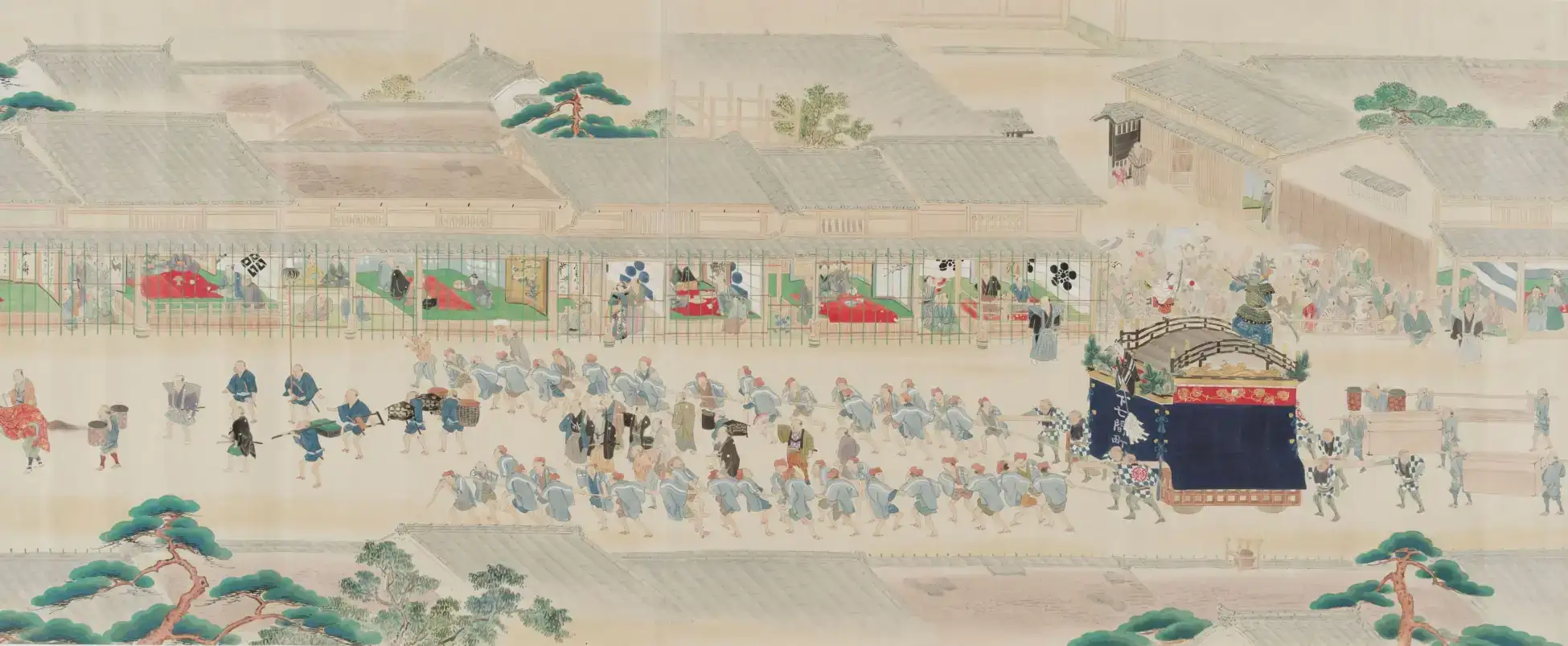
Over time, this tradition evolved into the Nagoya Festival, which began in 1955 as a symbol of post-war recovery. While the festival retains its homage to local historical heroes—such as Oda Nobunaga, Toyotomi Hideyoshi, and Tokugawa Ieyasu—modern additions, such as this year's Tokyo Disney Resort Special Parade, have expanded its appeal to a wider audience, blending the grandeur of history with contemporary pop culture.
Today’s festival continues to feature traditional processions, like the Procession of the Three Feudal Lords, alongside international cultural representations, making it an exciting event for people of all ages.
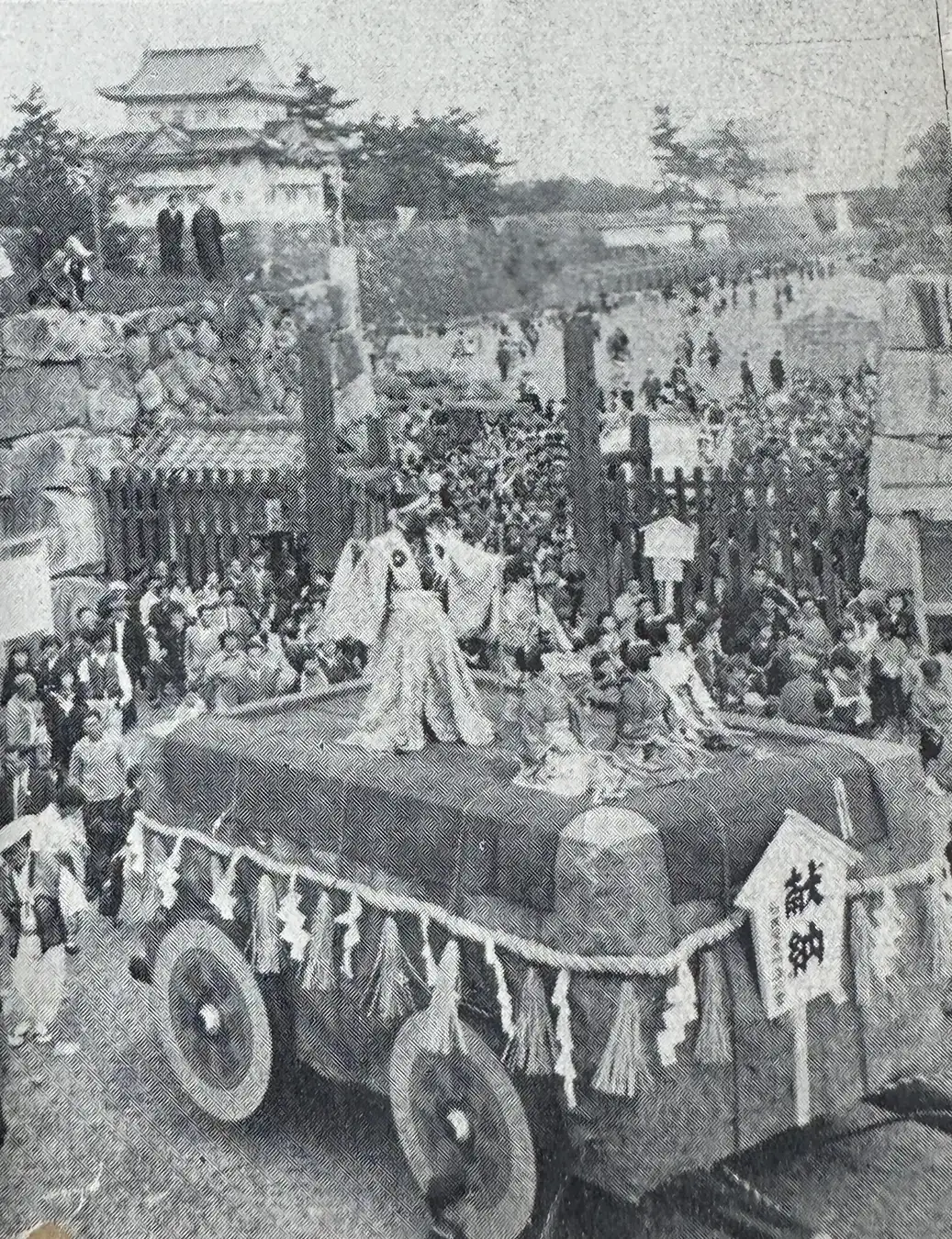
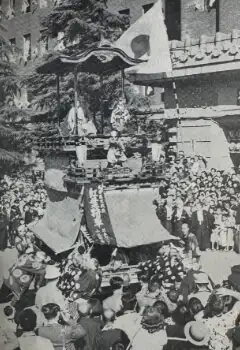
The first Nagoya Festival in 1955
The 1955 Nagoya Festival
In addition to the hero's procession, there will be float parades, and several culturally significant events are being held at venues throughout the city.
The Dashi Float Parade also showcases nine elaborately crafted dashi floats adorned with mechanical puppets called karakuri ningyo.
The Kagura Float Parade is another significant part of Nagoya's cultural heritage, representing a blend of artistry and tradition. Each float tells the story of its local region and gives festival-goers a chance to witness the beauty of these historical performances up close.
A special Disney Parade is unique to this year's event. It will enchant visitors with appearances by beloved Disney characters. Cultural events will occur throughout the festival at prominent locations such as Nagoya Castle and Oasis 21, offering traditional performances, exhibitions, and local cuisine, creating a vibrant atmosphere.
The Three Heroes Parade
Oct 20
The Three Heroes Parade is the crown jewel of the Nagoya Matsuri. It brings history to life, featuring Japan's most iconic unifiers—Oda Nobunaga, Toyotomi Hideyoshi, and Tokugawa Ieyasu—who all share significant historical ties to the region. The parade is a spectacle of historical reenactments, samurai processions, and cultural performances, attracting a multitude of visitors every year.
Oda Nobunaga and Toyotomi Hideyoshi were born in present-day Nagoya (in 1534 and 1537, respectively), while Tokugawa Ieyasu was born in nearby Okazaki in 1542. Together, these three men were responsible for unifying Japan and ending nearly a century of unrest and civil war, known as the Sengoku period.
Every year, three men are chosen to represent the local heroes. They are dressed in historically accurate clothing and paraded on traditional festival floats—and, in the case of Nobunaga, upon a horse ceremonially fitted with accouterments similar to those used during his lifetime.
A retinue of princesses and soldiers accompany the three men as they navigate the city, creating a unique and historically evocative display.
But just who were these "Three Heroes?"
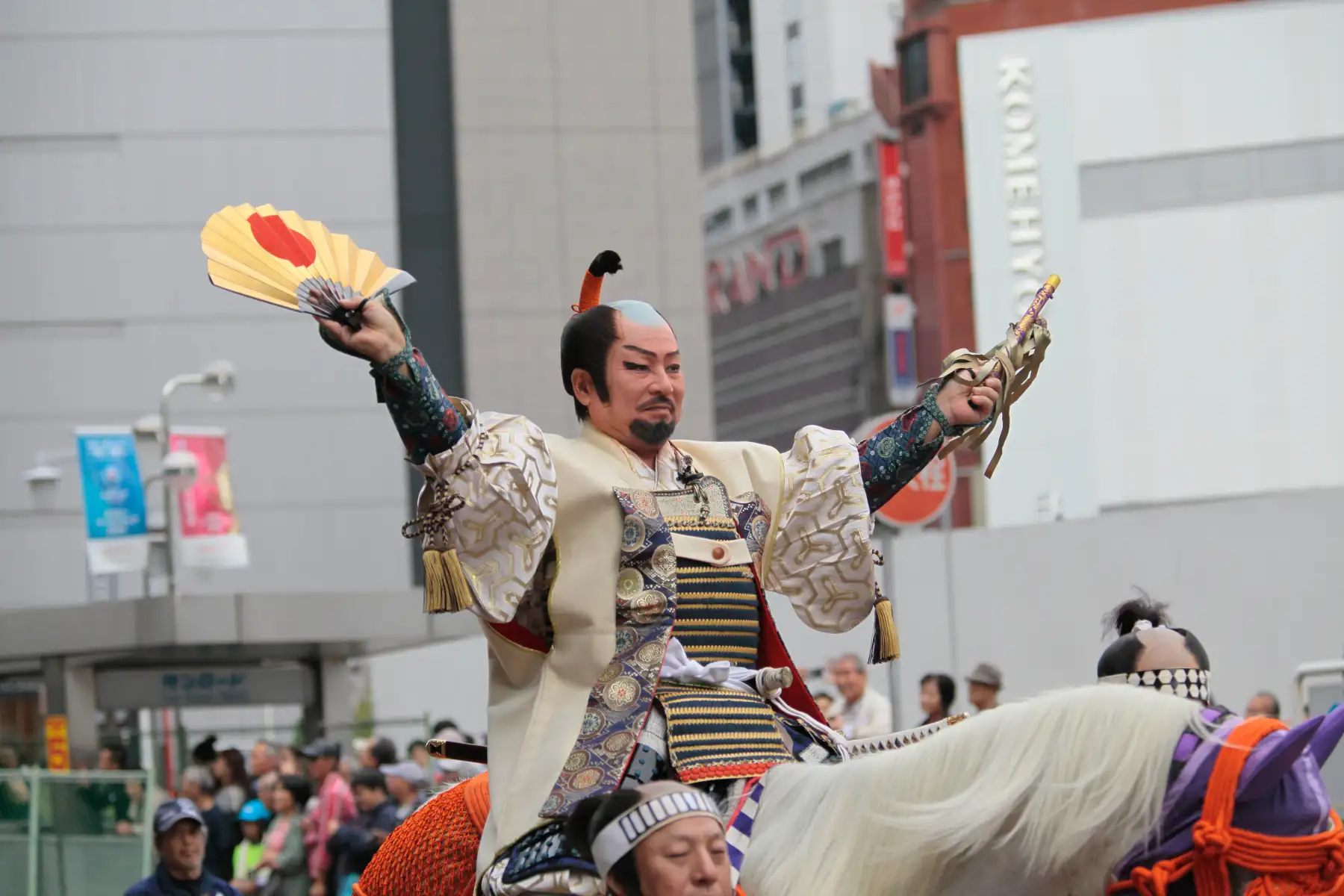
Oda Nobunaga (1534–1582)
Born in Owari Province, Nobunaga was known as a powerful daimyo who attempted to unify Japan and was the first of the three unifiers. In the Battle of Okehazama, he defeated Yoshimoto Imagawa and began his rise to power. He gained control over much of Japan; however, before completing the country's unification, he was betrayed and died during the 1582 Honno-ji Incident in Kyoto.
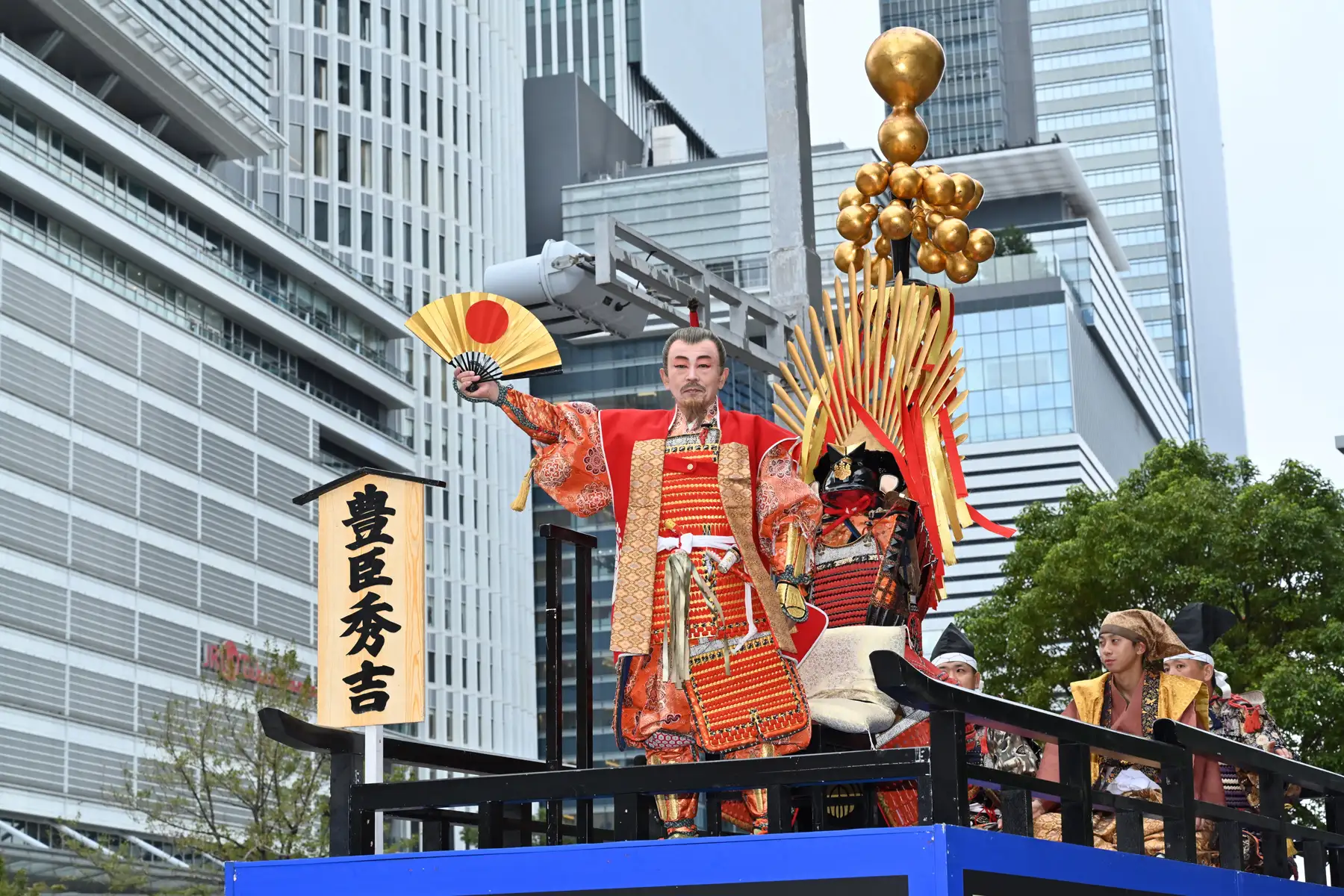
Toyotomi Hideyoshi (1537–1598)
Born as Tokichiro Kinoshita to a farming family in what is now Nakamura-ku, Nagoya, in Owari Province, Hideyoshi later became one of Nobunaga's most trusted generals. After Nobunaga's death, Hideyoshi succeeded in unifying the country, a goal that Nobunaga had pursued. Hideyoshi's achievements were so great that the Emperor granted him the surname "Toyotomi."
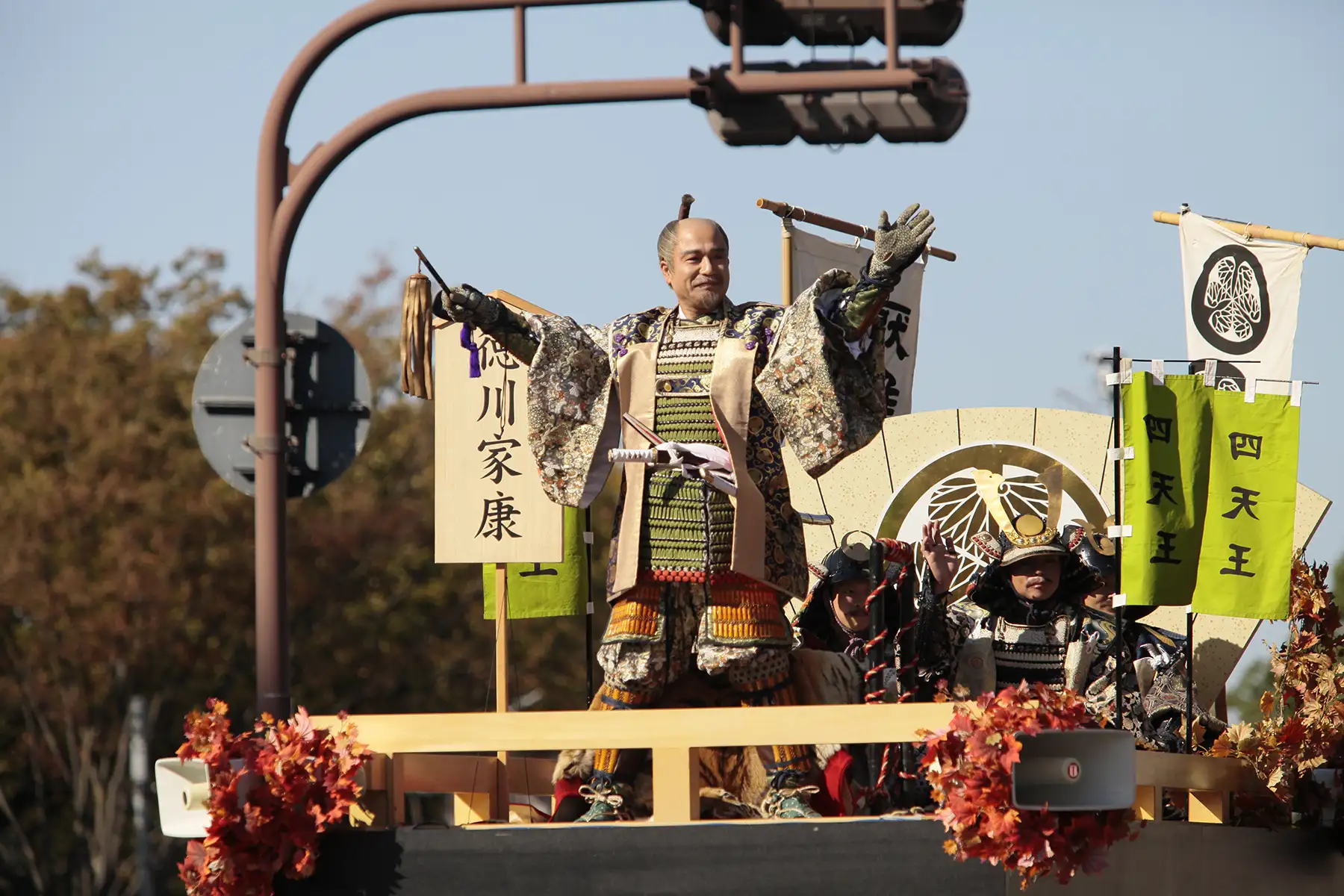
Tokugawa Ieyasu (1542–1616)
Known as the founder and first Shogun of the Tokugawa Shogunate, Ieyasu was born at Okazaki Castle as the son of Hirotada Matsudaira, the daimyo of Mikawa Province. During his youth, he was a hostage of the Imagawa clan. After Hideyoshi's death, Ieyasu led his forces to victory against Ishida Mitsunari in the decisive 1600 Battle of Sekigahara, which paved the way for his rise to Shogun in 1603 and the establishment of the Tokugawa shogunate, which lasted over 250 years.
Three Heroes Parade Schedule
Sun. Oct. 20
13:00 ~
The parade starts at Nagoya Station, with Oda Nobunaga, Toyotomi Hideyoshi, and Tokugawa Ieyasu leading the way with their samurai and historical figures entourage.
13:30 ~
The parade passes through the Fushimi intersection, offering spectators an opportunity to see the historical reenactment in full display.
14:00 ~
The parade continues to Hisaya Odori Park, where the heroes and their entourage make a stop, allowing the audience to witness historical reenactments and traditional performances.
14:30 ~
The procession moves through Sakae, near Oasis 21, showcasing traditional music and cultural performances.
15:00 ~
The parade concludes at Yaba-cho, wrapping up with the final cultural performances and reenactments of historical scenes.
Dashi Float Parade
Oct. 19
The Dashi Float Parade features nine culturally significant floats from different wards of Nagoya. These beautifully decorated floats each display performances by karakuri ningyō (mechanical dolls), which depict scenes from local folklore and history.
Along the parade route, panels will illustrate the history of Honmachi-dori, the former main street, offering visitors a glimpse into the region's past. Additionally, various areas along the route will feature food stalls and street performances.
Day and Night Parades
There are two Dashi Parades: one during the day and the other in the evening. The daytime parade features nine Dashi floats with Karakuri ningyō. The evening parade showcases the same floats illuminated with lanterns, creating a magical atmosphere.
Daytime Parade
Date: Sat., Oct. 19
Time: 11:47 ~ 13:29
Schedule:
Departure is at 11:47 from Aichi Prefecture Gokoku Shrine along Honmachi-dori Karakuri Performance at Hirokoji-Honmachi Crossing at 12:21, featuring the mechanical puppets (karakuri ningyo) show. The parade arrives at the Kinshachi Yokocho Yoshinao Zone East Entrance at 13:29
Route:
The parade travels along Honmachi-dori, making stops for performances and showcasing the elaborate floats.
Evening Parade
Date: Sat., Oct. 19
Time: 16:30 - 19:38
In the evening, the Dashi floats are illuminated with lanterns, creating a mesmerizing display as they make their way through the streets. The lantern-lit procession is a magical sight, and the floats continue to perform their intricate karakuri ningyō performances at different points along the route.
Schedule
The Lighting of Lanterns begins at 16:30 at Kinshachi Yokocho Yoshinao Zone East Entrance, adding a festive atmosphere to the evening procession. The floats depart at 17:30 from the Kinshachi Yokocho Yoshinao Zone East Entrance. There is a Karakuri performance at Higashi Kikko Plaza next to Dolphins Arena from 18:10 to 19:38
Route
The evening parade continues from the Kinshachi Yokocho Yoshinao Zone and moves towards Higashi Kikko Plaza, where additional karakuri ningyō performances take place. The lanterns add a magical touch to the festivities.
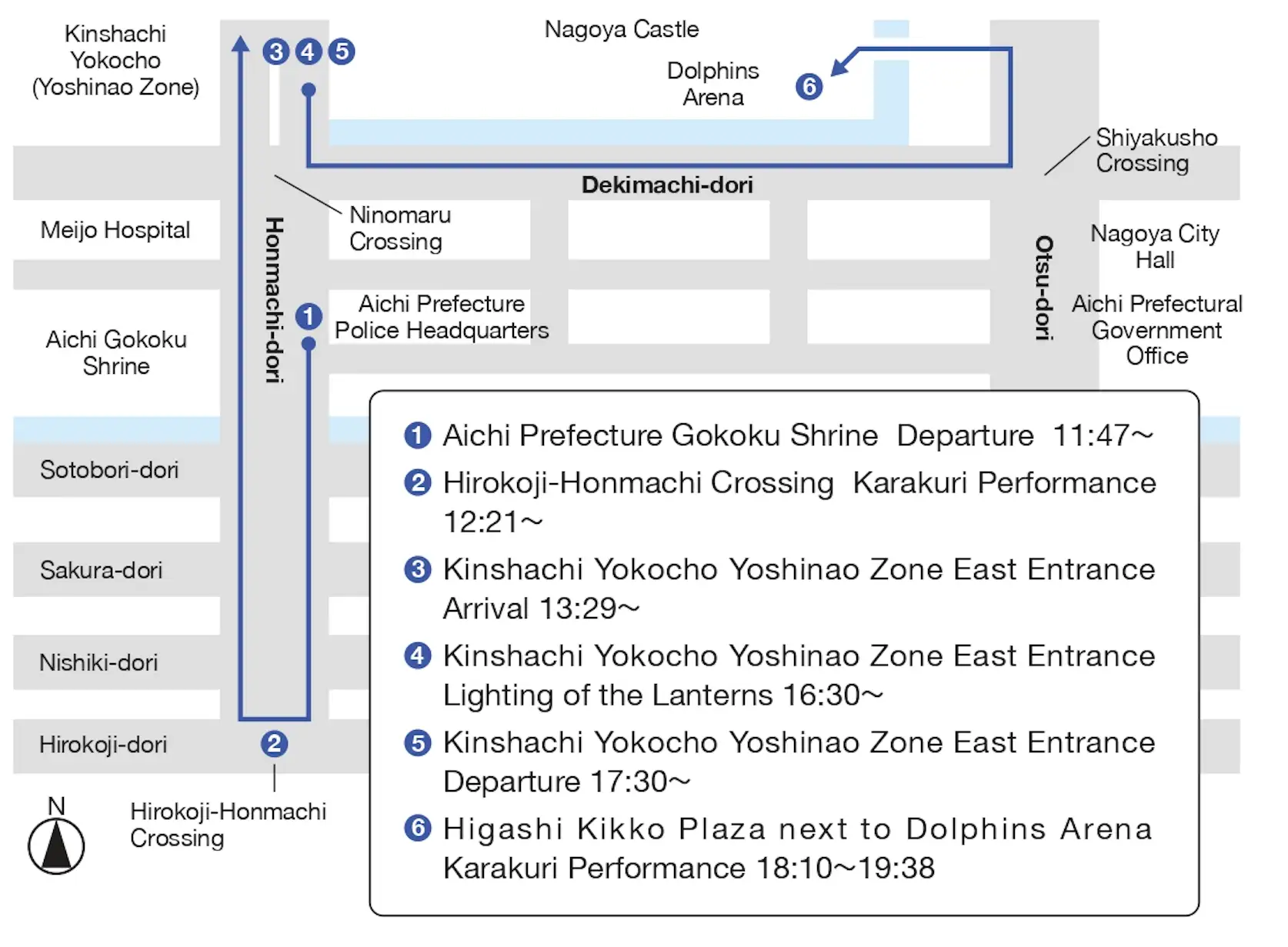
Participating Floats (in order of appearance)
Kasui-sha (河水車)
This float from Higashi Ward dates back to the Edo period and features beautiful water-themed embroidery. The karakuri ningyō atop performs delicate movements, reflecting the craftsmanship of the period.
Ogishi-sha (王羲之車)
Known for its elaborate designs and karakuri ningyō based on historical themes, this float showcases traditional Japanese artistry.
Kashika-jinsha (鹿子神車)
Another float from Higashi Ward, the Kashika-jinsha boasts a lion-dance performance by its karakuri ningyō , making it a visually exciting spectacle.
Yutori-guruma (湯取車)
This float represents a ritual scene where a doll mimics the pouring of hot water, enhanced by a mechanism that releases confetti, creating a dramatic effect.
Jinko-sha (神皇車)
Featuring mythological transformations, this float's karakuri ningyō portrays a shrine maiden who turns into a demon, making its display particularly notable.
Fukurokuju-sha (福禄寿車)
A float dedicated to the deity Fukurokuju, with multiple dolls in motion, highlighting the skills of 18th-century craftsmen.
Nifuku-jinsha (二福神車)
This float features dual figures of Ebisu and Daikoku, two gods of good fortune, who bring charm to their lively performance.
Momijigari-sha (紅葉狩車)
Inspired by the Noh play Momijigari, this float brings the story to life through traditional dance and mechanical artistry.
The Kagura Float Parade: Oct. 20
The Kagura Float Parade is one of the key attractions of the 2024 Nagoya Festival. It showcases seven floats, each featuring a roofed enclosure containing a lion mask ("shishigashira") as its centerpiece. These kagura floats are cultural assets distinctive to their respective local regions and are a vital part of the city's traditional celebrations. The lion masks are thought to repel malevolent spirits and bring prosperity to the community. The performances are accompanied by energetic drumming and flute music.
The Kagura Float Parade is one of the key attractions of the 2024 Nagoya Festival. It showcases eight floats, each featuring a roofed enclosure containing a lion mask or shishigashira as its centerpiece. These kagura floats are cultural assets distinctive to their respective local regions and are a vital part of the city's traditional celebrations. The lion masks are thought to repel malevolent spirits and bring prosperity to the community. The performances are accompanied by energetic drumming and flute music.
Date: Sunday, Oct. 20
Time: Starts at 11:00 (ends around 17:00)
Parade Route
The parade starts at the City Hall intersection and follows a path through Sakae and Hirokoji-Honmachi, with multiple stops along the way for spectators to enjoy up-close kagura performances.
Participating Kagura Floats
This year, eight kagura floats from Nakagawa and Minato Wards will participate in the parade, each offering a unique glimpse into their local cultural heritage:
Nishinokiri-Kagura (西之切神楽)
Nakagawa Ward
Known for its vibrant lion dance, representing community protection and prosperity.
Nakanokiri-Kagura (中之切神楽)
Nakagawa Ward
Featuring a richly decorated lion mask, this float parades with lively music and energy.
Minaminokiri-Kagura (南之切神楽)
Nakagawa Ward
A bold float with an elaborate lion mask provides powerful, exciting performances.
Higashinokiri-Kagura (東之切神楽)
Nakagawa Ward
This float captivates spectators with its intricate lion mask, drumming, and chanting.
Chita-Kagura (知多神楽)
Minato Ward
Hailing from the Chita area, this float features a historic lion mask and emphasizes community bonds with its lively kagura performance.
Shinchaya-Kagura (新茶屋神楽)
Minato Ward
This float is celebrated for its preserved lion mask and a spirited kagura dance, which brings energy to the parade.
Ousucho-Kagura (大須町神楽)
Minato Ward
Known for its intricate craftsmanship and dynamic performances, with a beautifully crafted lion mask.
Tochicho-Kagura (当知町神楽)
Minato Ward
This kagura float blends modern festival elements with traditional lion dance, offering a unique local flavor.
Tokyo Disney Parade
Get ready for a magical experience at this year's Nagoya Festival, which will include the special Tokyo Disney Resort Parade on Oct. 20.
With the excitement building around the new Fantasy Springs theme port opening at Tokyo DisneySea, Mickey Mouse and his friends are spreading joy across Japan, bringing their vibrant energy to festivals around the country. As part of the celebration, they'll be parading through Nagoya to the upbeat rhythm of "Jamboree Mickey!"—a lively performance that will enchant Disney fans of all ages.
The Tokyo Disney Resort Parade
Date: October 20
Starts: 13:00
Parade Route:
The parade will begin at the Nagoya City Hall Intersection and proceed along the streets to the Sakura-dori Otsu intersection. This special event will feature a lively "Jamboree Mickey!" performance with Mickey Mouse and his friends, spreading joy to festivalgoers. Additionally, local children will participate in the parade, adding to the festive atmosphere.
Duffy Bus
Visitors can also enjoy a special appearance from the fluffy "Duffy Bus" at Nagoya Castle's Nishinomaru area. This bus, wrapped in the same cozy material as the beloved Duffy plush toys, is a must-see for Disney fans. Snap a photo with the adorable bus, explore the Duffy & Friends stuffed toys display, and grab a leaflet to learn more about these beloved characters.
Duffy Bus Display
Date and Time: Sun. Oct. 20,
Time: 9:00 ~16:30 (scheduled)
Location: Nishinomaru, Nagoya Castle
There's More!
In addition to the Three Heroes Parade, Dashi and Kagura floats, and the Disney Parade, the Nagoya Festival 2024 offers a wide range of cultural activities across several major venues.
The Nagoya Castle Autumn Festival will take place on October 19 and 20 at Nagoya Castle. During the festival, visitors can enjoy the scenic castle grounds, participate in events, and experience the vibrant energy of one of Japan's most prominent historical sites—all with free admission throughout the weekend.
Hisaya Odori Park will also host a variety of events, including the Nagoya Youth Power Stage, which will showcase young and talented performers. There will also be samurai group performances and cultural experiences where attendees can try on samurai armor or create Nagoya folding fans.
The Angel Plaza area will also feature food trucks, tourist information booths, and numerous product booths to enhance the festival atmosphere. These hands-on cultural experiences and live performances add another layer of immersion to the festival, making it a rich showcase of both modern and traditional aspects of Nagoya's culture.
Additionally, several of Nagoya's tourist spots will offer special free admission during the festival, including the Nagoya City Science Museum, Nagoya City Art Museum, Hisaya-Odori Gardens Flarie, and Osu Kannon Temple. Many of these locations will be open for extended hours and provide a unique opportunity to explore the cultural heritage of Nagoya without cost. This makes the Nagoya Festival an ideal time for both residents and visitors to explore the city's iconic landmarks and participate in its lively festivities.

Nagoya Buzz
Events, local info, and humor for the international community of Nagoya, Japan.
Follow Nagoya Buzz :
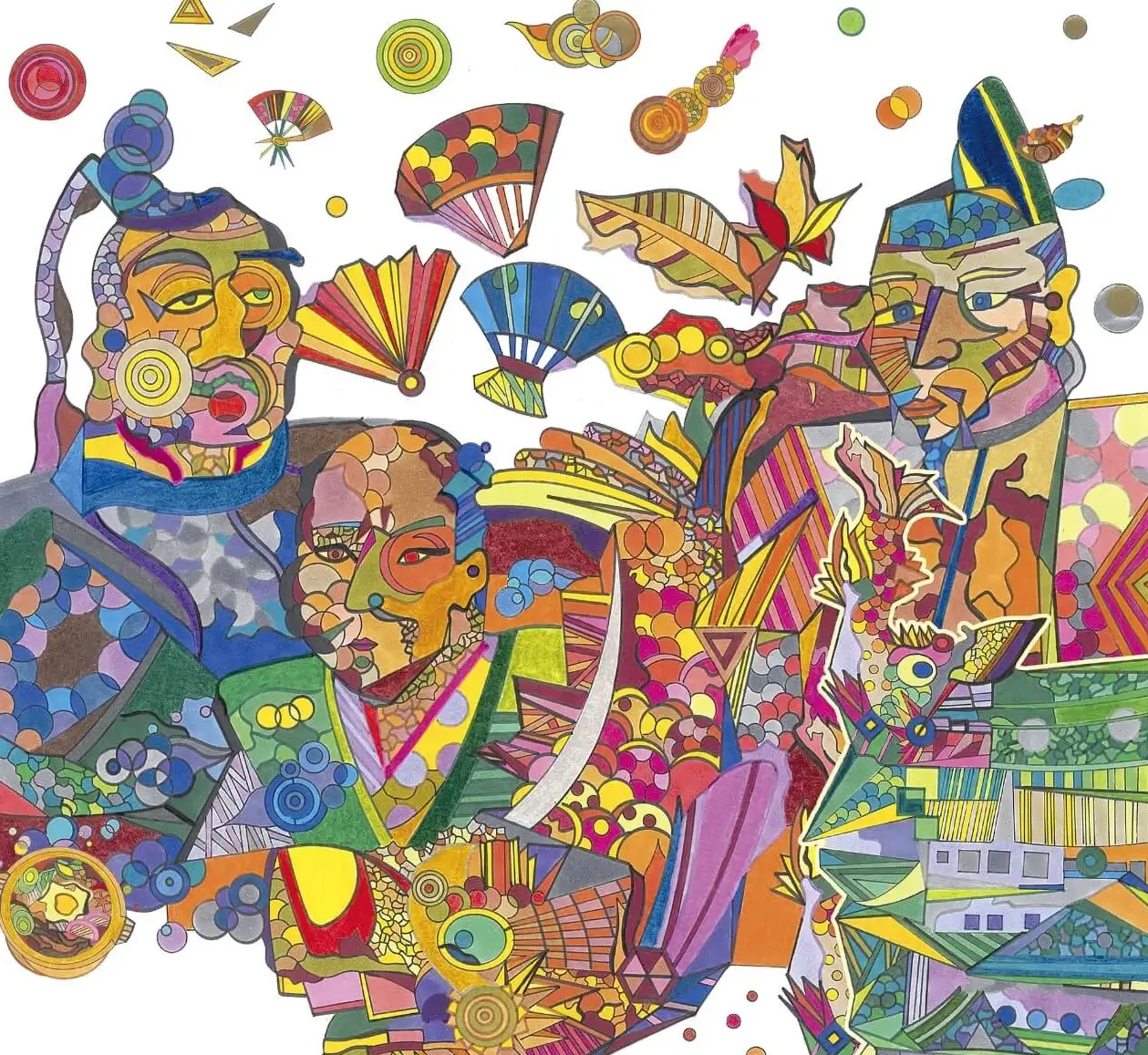


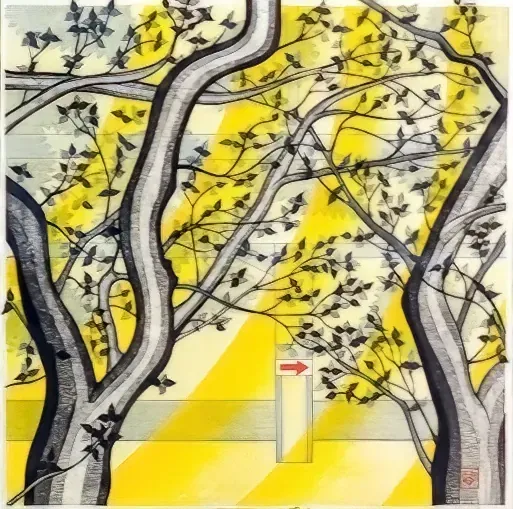


Leave a Comment